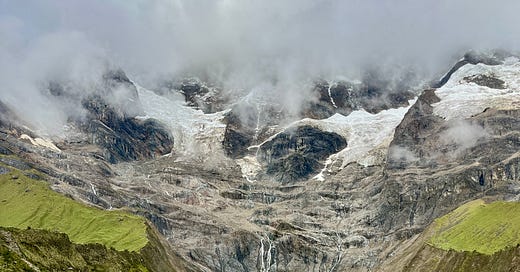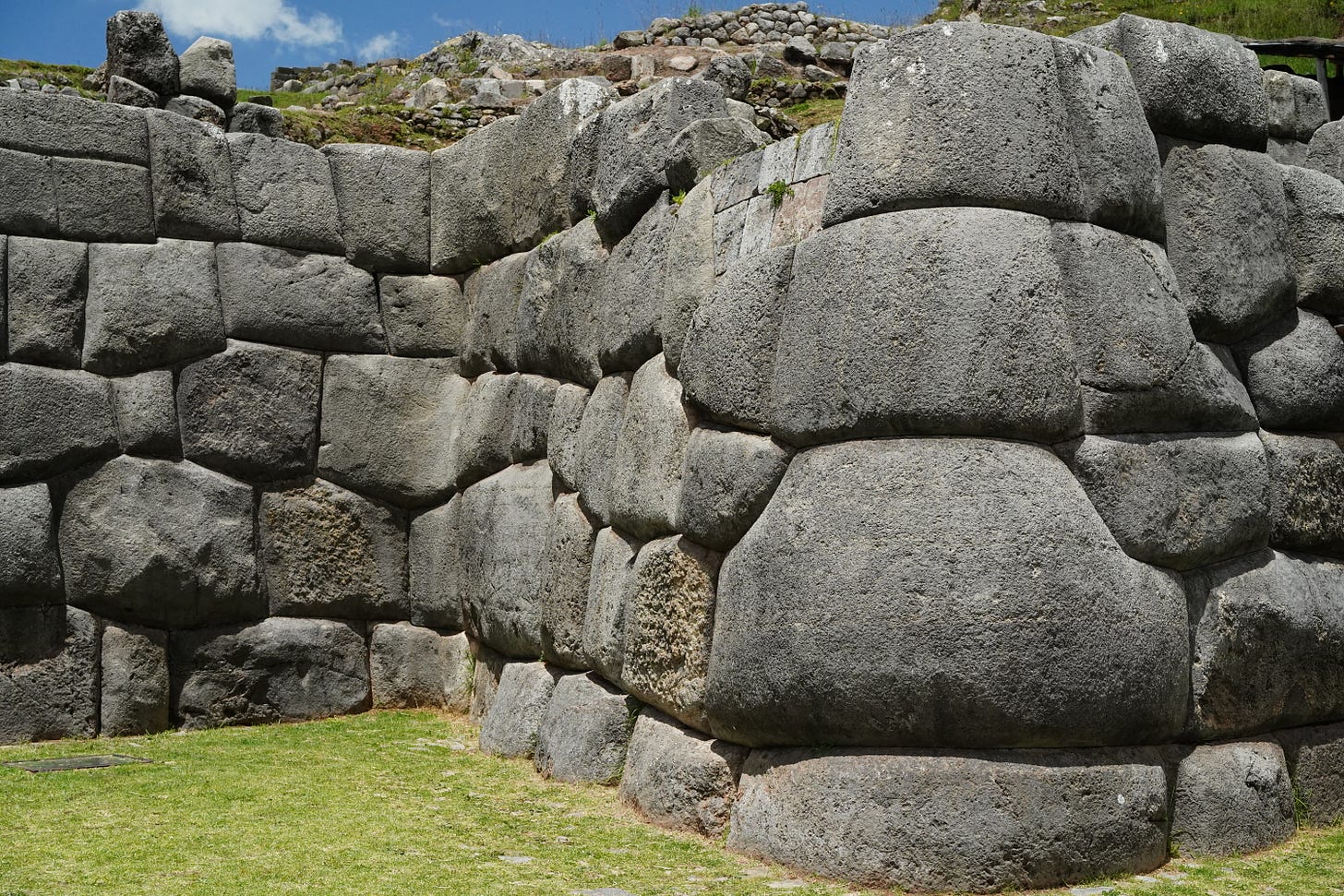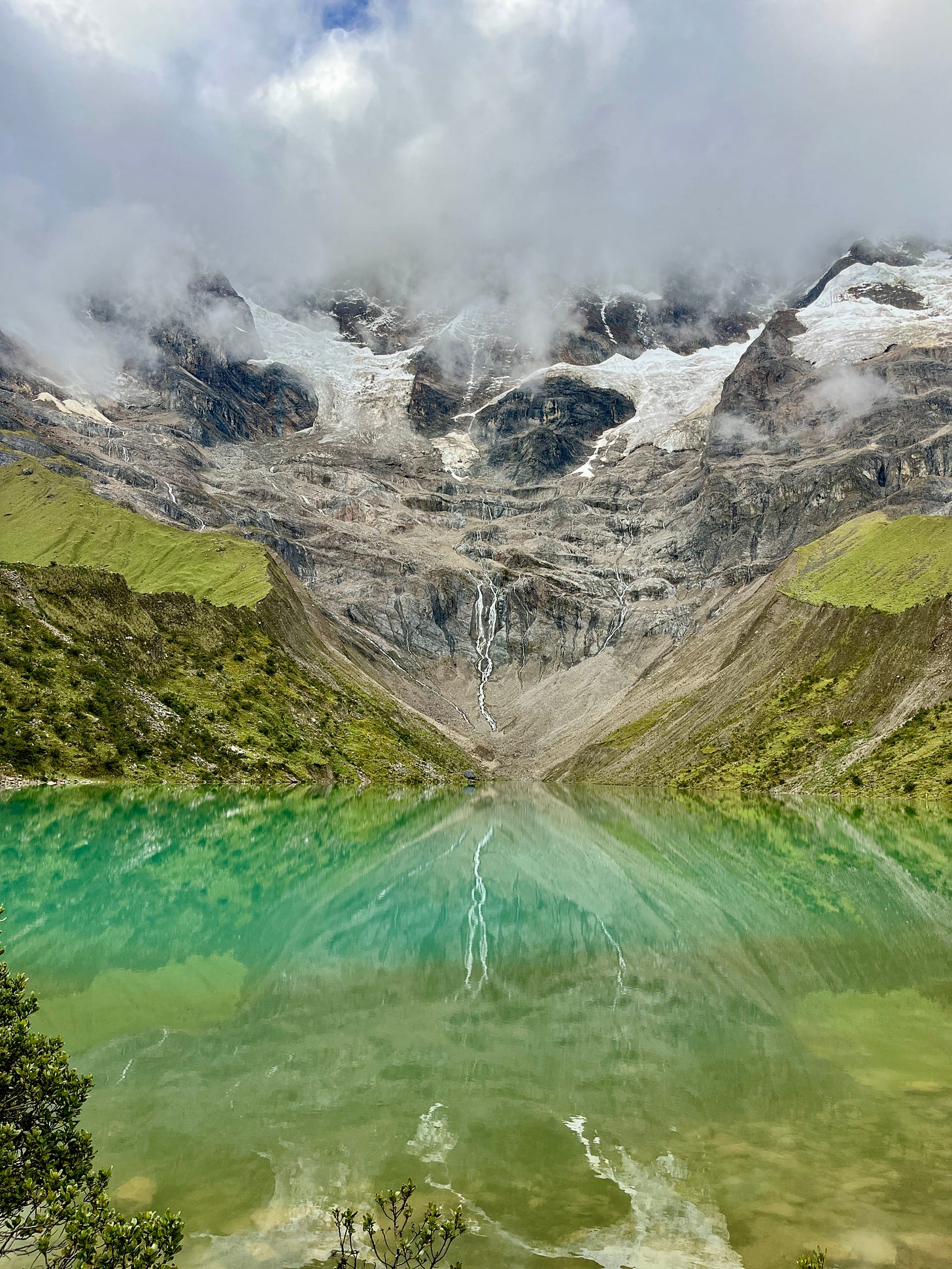At the time of starting this draft of the newsletter, it’s 2:00am in the morning of March 14th in Aguas Calientes, the small tourist town at the base of one of the seven wonders of the world, Machu Picchu. Russell (my awesome brother) and I have finished trekking about 82 kilometers (that’s 51 miles for us norte americanos) through the Peruvian Andes with a small group. We’ll wake up at 4:30am tomorrow to arrive at Machu Picchu by 6:00am. If you follow me on social media, you will have learned that I did not, in fact, make it to Machu Picchu due to the most unpleasant food poisoning of my life. Boo, sad!
I’m still awake because early wake-up times naturally induce my old friend, insomnia, and also because I feel funky about what’s gone down the past couple of days. Yes, of course, it’s been breathtakingly beautiful and I’ve adored spending time with Russell. But it’s also been, I think, particularly weird.
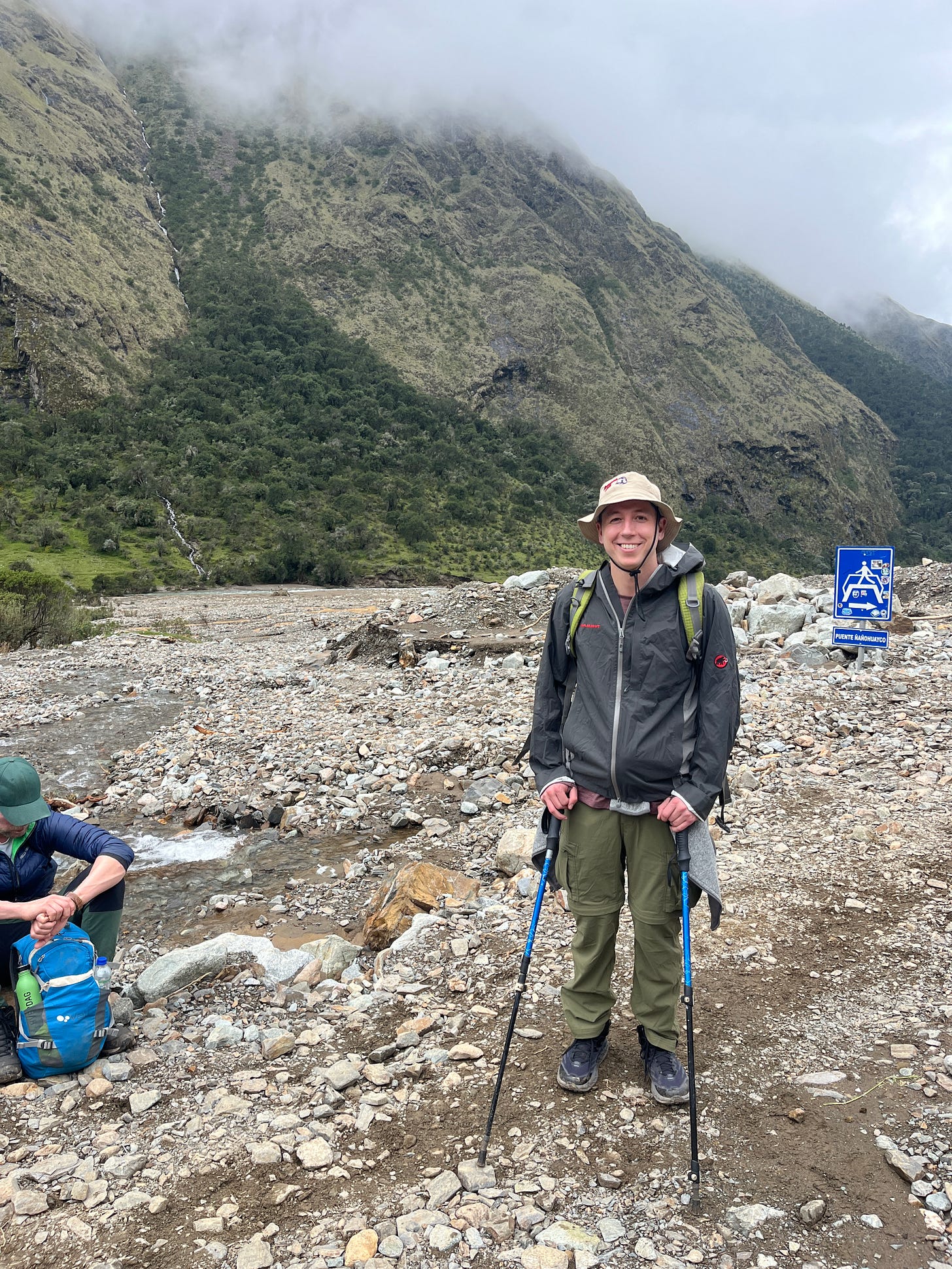
I reflect on the ethics and oddities of tourism while traveling and not. As an example of how much it occupies my headspace, I’ve been brewing up a newsletter about the juxtaposition between my non-touristy and touristy Patagonian legs for the past week (only to be interrupted by the *current* newsletter).
I’m still conflicted. I don’t think I’ve arrived at a perfect understanding on how I feel about it, but one particular experience definitively brought me closer to that understanding: I saw a dead tourist while on a tour.
The dead tourist
So first, why did Russell and I opt for a tour? It felt obvious: first of all, in Peru, high-quality tours are affordable. There were porters to carry our packs, lovely pre-arranged meals at the bases of some of the tallest mountains in the world, and nice accommodations with plush mattresses ready to slap a sleeping bag on (nice is relative — I found them nice because I have backcountry standards, Russell found them “rustic”). Most of all, we had a guide, Juanito (the adorable Spanish suffix, “ito,” can be tagged unto a word to mean “little” or “smaller”, but it’s also a term of endearment. Juanito told us to call him this, so we went with it. Meanwhile, I have thoroughly enjoyed being called “señorita” and even “mamita” for the past two months).
Juanito was super knowledgeable about the local flora and fauna — the diverse micro-climates in the Andes and thousands of orchid species were surely fascinating to learn about — and also some Incan history. However, I’ve learned that no one really knows what went on with the Incas, which of course only adds to the much-deserved intrigue. New ruins burrowed in mountains and vegetation are discovered every few years, and new theories are constantly arising. For example, how perhaps Machu Picchu itself was a mecca-like university for nobles and holy people, since human remains that originated from distant regions like modern-day Argentina, Brazil and Ecuador have been found there. Juanito suggested that it cannot be known for sure that the Incas practiced human sacrifice, which confused me since I’d learned from multiple sources that hundreds of mummified children were indeed found in ancient burial sites either strangled or hit over the head. Was this the Incas, or was this from a prior indigenous people who the Incas conquered? Why were the Incas so obsessed with astrology? How did they build the rocks like that?!?!?! Frustrating but deliciously mysterious, we’ll never know. So on the history front, I took everything, including Juanito’s info, with a grain of salt.
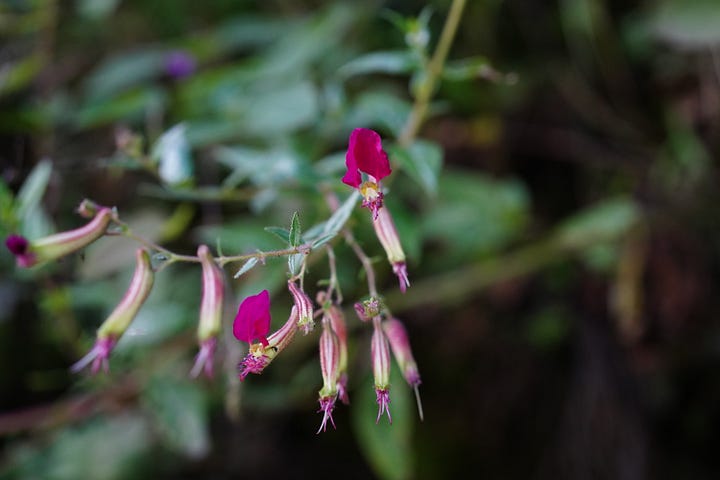


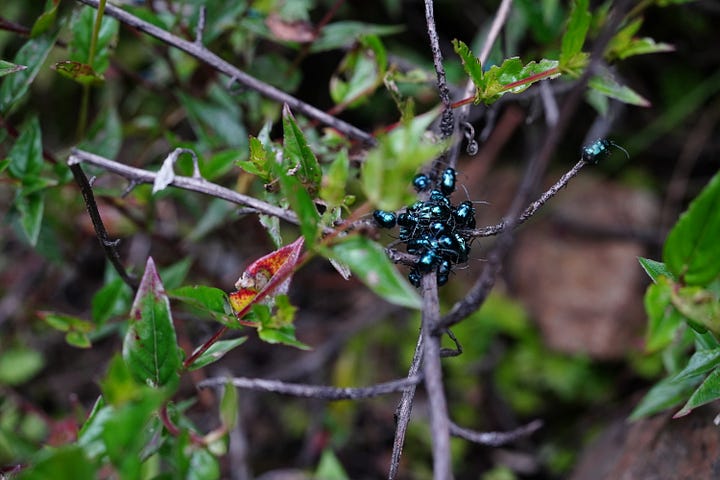
But mostly, Juanito and the tour company were helpful on the safety front. In researching my South American travels, I considered doing the Salkantay trek solo, but in retrospect that would have been irresponsible. As Russell observed, these mountains are not like the mountains I’m used to in New Hampshire, or even in Patagonia. In spice terms, New Hampshire is mild, Patagonia is fuerte, and the Andes aren’t even on the menu.
There are constant landslides in the rainy season that blow out already steep trails. In one day, we experienced sleet at the base of Salkantay that warranted all of my available hiking layers, then jungle humidity that warranted bug spray. Juanito and the tour company had scouts throughout the trail to monitor landslides and weather, plus years of experience to understand acceptable risk. I didn’t appreciate how essential all these precautions were until day three of our five-day trek.
It was our easy day, as we were only hiking 6.5 miles mostly downhill into this bizarre and magical rainforest climate that somehow exists 10,000 ft above sea level. I was walking ahead of the group because walking fast induces a meditative state, and also because I’m impatient and like to be away from other people sometimes.
Up ahead, I saw three locals, two older women and one boy, maybe seven, staring into the distance and pointing. I said “hola” as I passed, and while the women responded similarly, the little boy, free of inhibitions, said “mira, allá” (look, over there). I stopped to look at where he was pointing, but all I saw was a wide canyon with a moderately strong mountain stream.
I said “Qué es esto?” (what is that?) to the little boy, and he replied in Spanish words I can’t remember or didn’t understand. What I did get was “…al lado del árbol” and “está muerto.” Muerto I definitely knew; it means “dead.” I asked, “pero qué está muerto, es un animal?” And he said, “no, es una persona.”
The rest of the group caught up, and Russell, speaking much better Spanish than me, got the full low-down from one of the women. What she said next jarred me: “Es un turista, cómo usted,” which means, “it’s a tourist, like you.”
I wasn’t sure if I saw it at first, but after receiving the detail that the body didn’t have any clothes, I determined that the pinkish blob I saw splayed on the rocks at the stream bed was the dead tourist.
As the group came forward and received the news, Juanito and the women discussed how the tourist must have taken the wrong trail and slipped upstream, washing up downstream here. I put together how it might have happened. Just 20 or so minutes before arriving here, we crossed a bridge over a canyon that embodied the beautiful yet violent paradox of nature: its walls were a mix of red, orange and brown formed by an esoteric geologic wonder, and the water within it was strongly gushing in between giant boulders that not even the most intrepid white-water kayaker would dare traverse (at least, hopefully not). Our group, encouraged by Juanito, tossed some coca leaves into the rapids as an offering to “Pachamama” (which is Quechua, the most common indigenous Andean language, for “mother earth”). The leaves flipped over and over in the wind, appearing as ephemeral bursts of peaceful white moths — even Russell thought it was a magical moment — before finding a new home in the stream. But to the left of the bridge was a narrow and slippery trail that might offer a good view, but not without a side of risk. I have an un-provable ~feeling~ that the dead trekker took that trail.
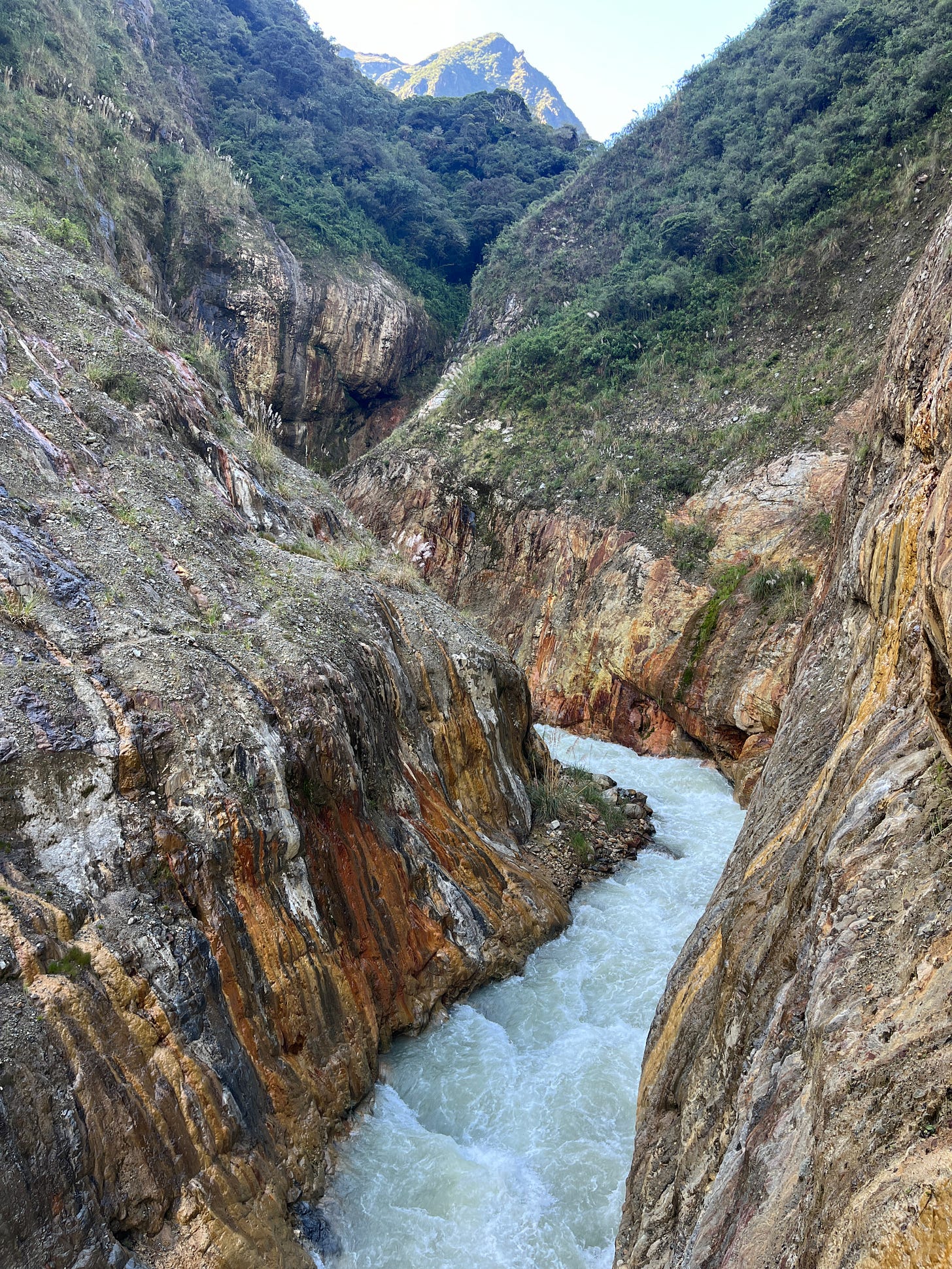
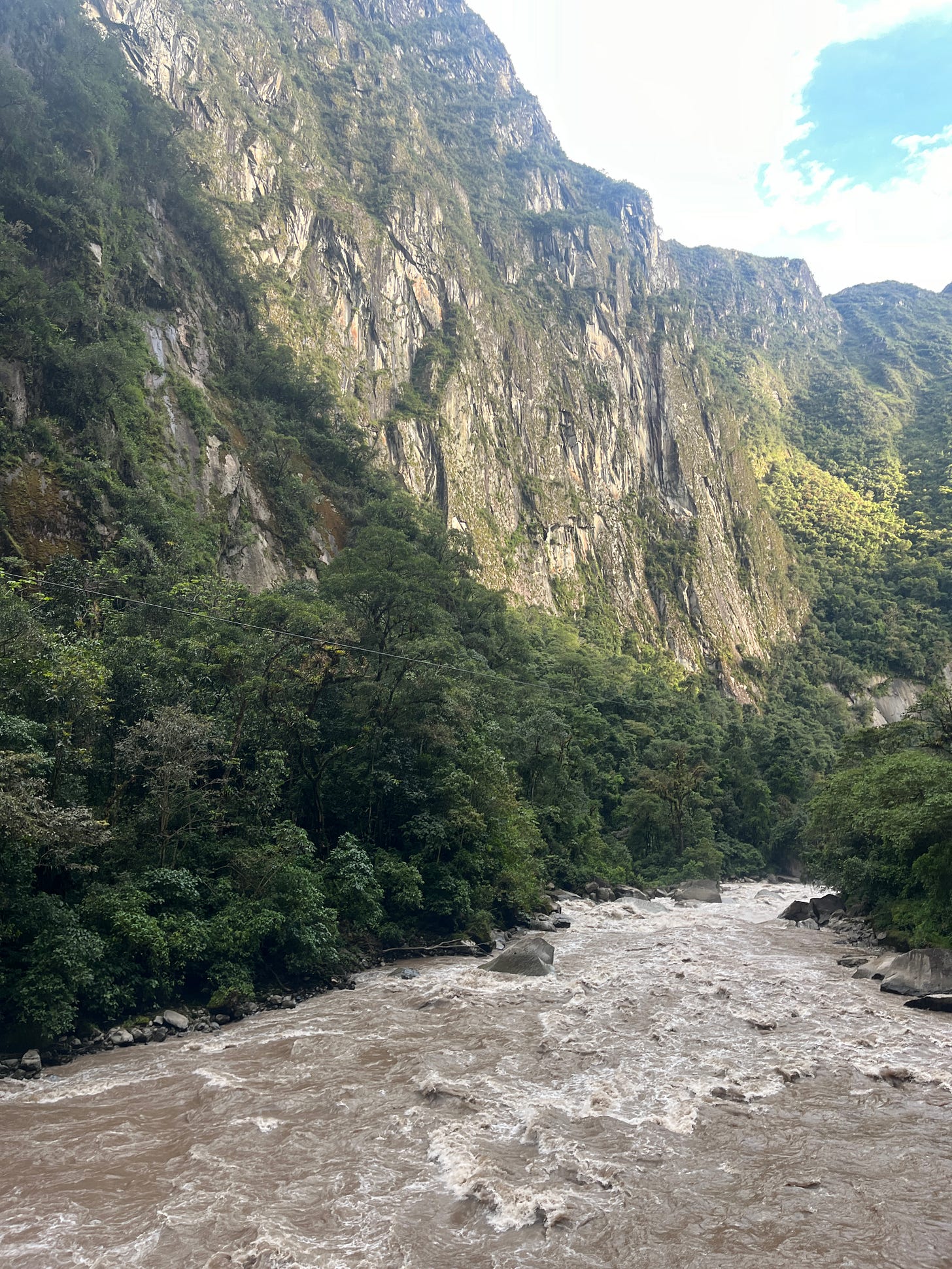
Obviously, seeing the dead body in the distance was disturbing. I was overwhelmed with thoughts and without a script of “how to feel” about what I saw. I thought about this person’s family, how they’d probably like to recover their child’s or partner’s or friend’s remains but likely were just learning of their death, or maybe didn’t even know yet. I thought about how anonymous this person was, stripped of not only their clothes and belongings, but also their identity and story, simply laying naked at the base of mountains they had travelled thousands of miles to appreciate. I thought about how we belong to nature, and how nature doesn’t care about our attachments to our siloed human world. At some point, we flow with it, and who we think ourselves to be vanishes.
As you can imagine, these are some hefty existential thoughts — much too hefty for a 29-year-old tour guide and a group of eight strangers to take on. Juanito formed a pow-wow, gave an impressive speech about how “this is why it’s important to go with local, knowledgeable guides” and how “life is short and we need to be grateful for every single day,” and we continued on our tour to a local coffee plantation.
But I did not want to tour the coffee plantation. As Juanito asked us to join him in some tall and claustrophobic bushes, I decided I needed to leave. I sat in the grass for a bit. I cried, but I wasn’t sure why. I think it was because even after seeing such violence, a dead tourist draped over some rocks beside a trail, we all moved on with our tour of the Andean mountains, and I can’t blame any of us for doing so, because we were only following the itinerary.
What happened next disturbed me the most. Just as Russell approached me and took the weight off, Juanito came over. Juanito is an absolutely wonderful guy, and I can’t fault him in the slightest for how this went down, but his ensuing speech did make me ill. He started talking at me with platitudes about how “it’s part of the circle of life,” and “we need to embrace each moment.” I was not ready for the pep-talk. Just as I was delighted to receive a glimmer of realness from him, as he divulged that he himself struggled to witness the body but needed to maintain a strong façade for the group, it all came crashing down. He said “okay, stand up, please” and made me give him a hug before saying “we are going to have the coffee now, yeah?” NOOOooOOOOOOOoooooOO!!!!
Juanito truly did nothing wrong — he was only doing his best (and his job). It was the demands of tourism, not Juanito, that was the problem. I didn’t want to stand up, or give a stranger a hug, or discover notes of acidity in the Peruvian coffee. I felt very, very icky.
Reckoning with the ick
That moment, in which I was asked to enjoy my tour after seeing a dead tourist, cemented that this ineffable “ickiness” I’ve always felt with tourism stems from its reductiveness. Tourism was forcing me to be a hedonistic sheep and Juanito a shepherd, herding us away from private moments of reflection into the next sight-seeing activity. The death of another human was more-so an inconvenience than a tragedy, and my gloomy existentialist spiral was more-so a threat to good vibes than a productive reaction. Just like the dead hiker, both myself (the tourist) and Juanito (the tour provider) were stripped of our humanities and complexities, barred from feeling anything besides content and forced to comply with the schedule and enjoy it, god damn it. As the woman staring out over the cliff said, in the eyes of the Andean mountains, Russell and I weren’t ourselves; we were tourists, just like the anonymous one who died.
…and everybody hates tourists. No one arrives at a tourist town and feels inspired. We mock tourists, often while we are tourists. Tourism is not the best we can do, rather it’s a close ally of our worst shade: hedonism.
And yet, it’s not so bad. I started my travels by reading a New Yorker piece dissing travel, and while it resonated, it felt far too cynical (and elitist!). I do agree tourism brings out the worst in us (again, hedonism). And it does mystify me that people do stuff while traveling that they don’t even like just because it’s “what you do in (insert travel destination here).” I loathed how many complaints and audible groans I heard on the W-Trek in Chile or the Salkantay Trek in Peru from people who seemingly did not remotely enjoy hiking but did so because it’s “what you do” in Patagonia or the Andes. And I’m not-so-holier-than-thou: I’ve done my share of horse-back riding excursions (nO THanK yOU, that’s scary) and cooking classes (I don’t like cooking) while traveling.
But maybe “travel” and “tourism” are different, and while the former will not, as the cliché goes, help a lost soul find oneself (therapy would probably work better!), I do think it challenges us to grow in exciting (and fun) ways. It likely builds empathy, and achieves a different cliché of “broadening one’s perspective”: traveling in rural Chile and staying in a Shipibo community in Peru, for example, allowed me to understand Western materialism in a new way.
And yes, tourism can and does tarnish the spirit of certain places, but it can be a force of good, too. Juanito pointed out that tourism in the Salkantay region has helped fund broadband access for locals in remote Andean towns; as a result, their children can attend virtual classes and learn online. Anyone who argues against the benefit of that is verging on paternalistic. Juanito, a nature-loving extrovert, seemed to genuinely enjoy his job, reminding us often how grateful he was to have the majestic Lake Humantay as his office. He chose this career while his siblings chose accounting, engineering, and even art. Further, I’ve gained respect for anyone who spends their precious vacation time and money in the mountains, forfeiting comfort (altitude sickness, baby!) and even the assurance of safety (again, landslides!!!!) to experience the wonders of nature and Peruvian cultures. Finally, this tour allowed my brother and I to challenge ourselves, bond quite a lot, and see some of the world’s most precious places.
In conclusion…
So clearly, I’m still conflicted. I guess tourism — from the perspective of someone privileged enough to be a tourist — is yet another paradox of both good and bad. If you’re reading this, I’d be curious to know how you feel about tourism, too.
On the update front, I’m now back in the U.S. and will be visiting grad schools for almost three weeks. Not to be corny (again!), but the past two months have been life-changing; I’m very grateful to Peru, Chile, and Argentina (and their tourism industries!) for the opportunity to explore and grow there. And I can’t wait to see you all in the states. Hugs!

